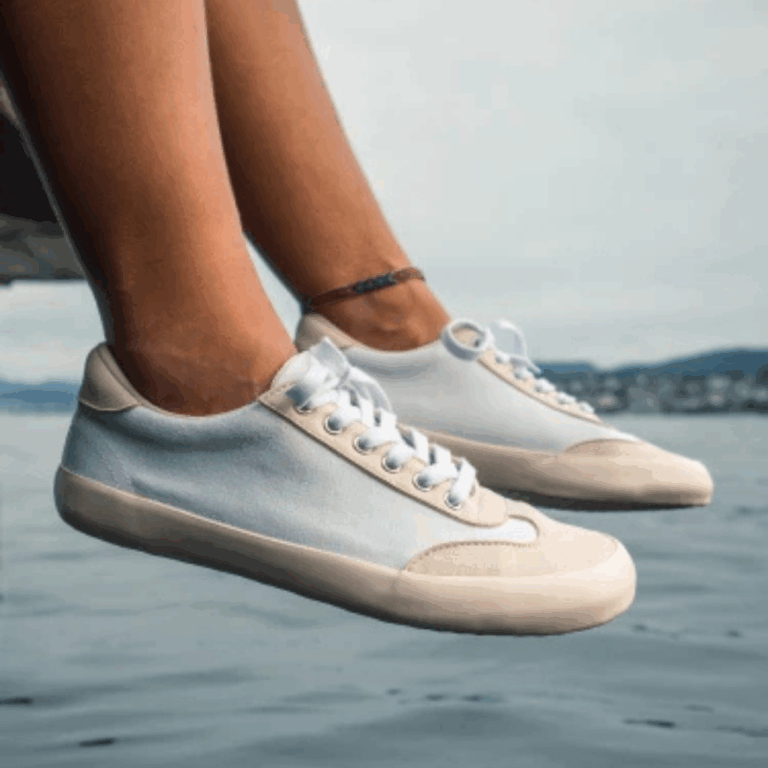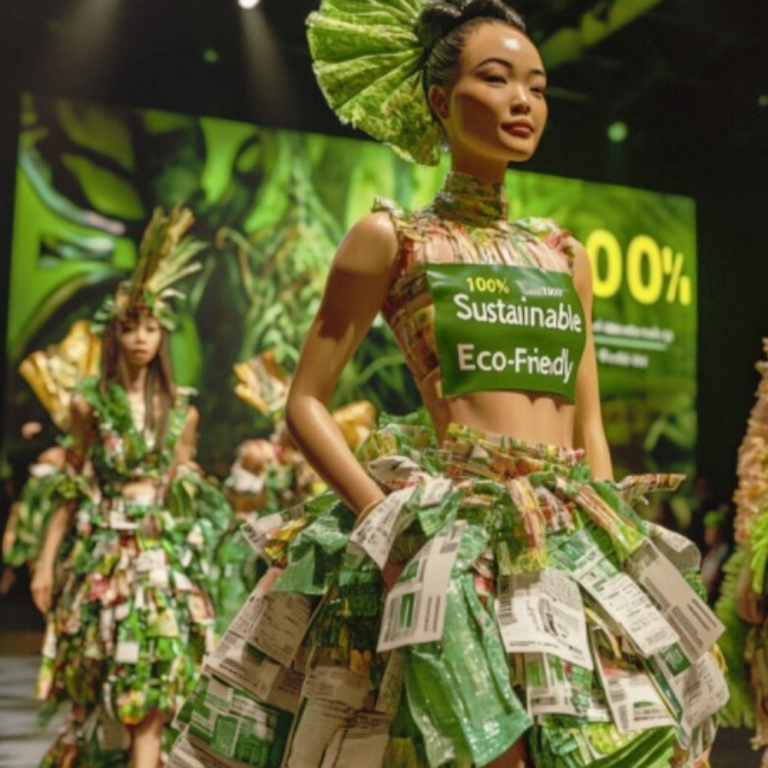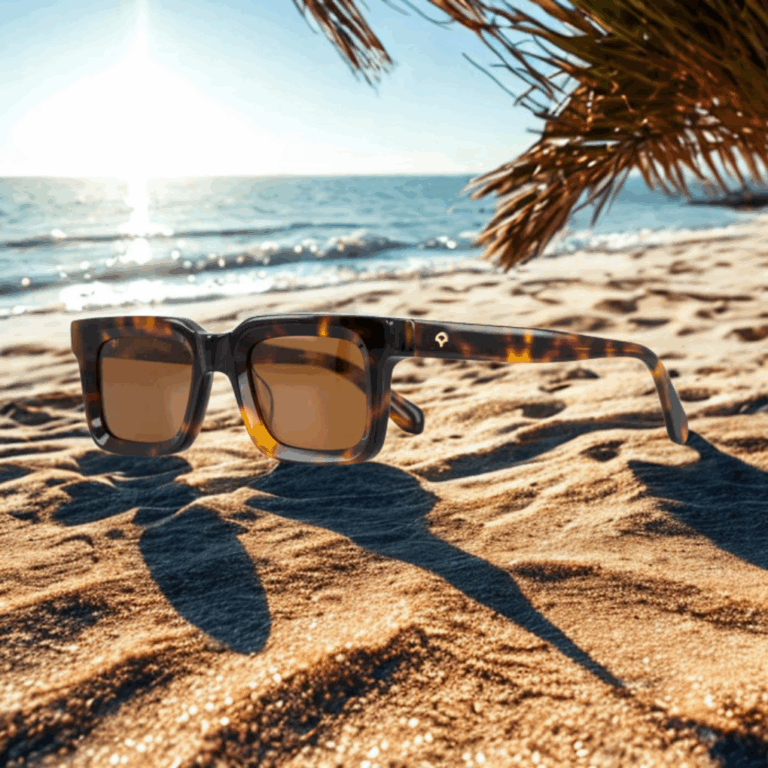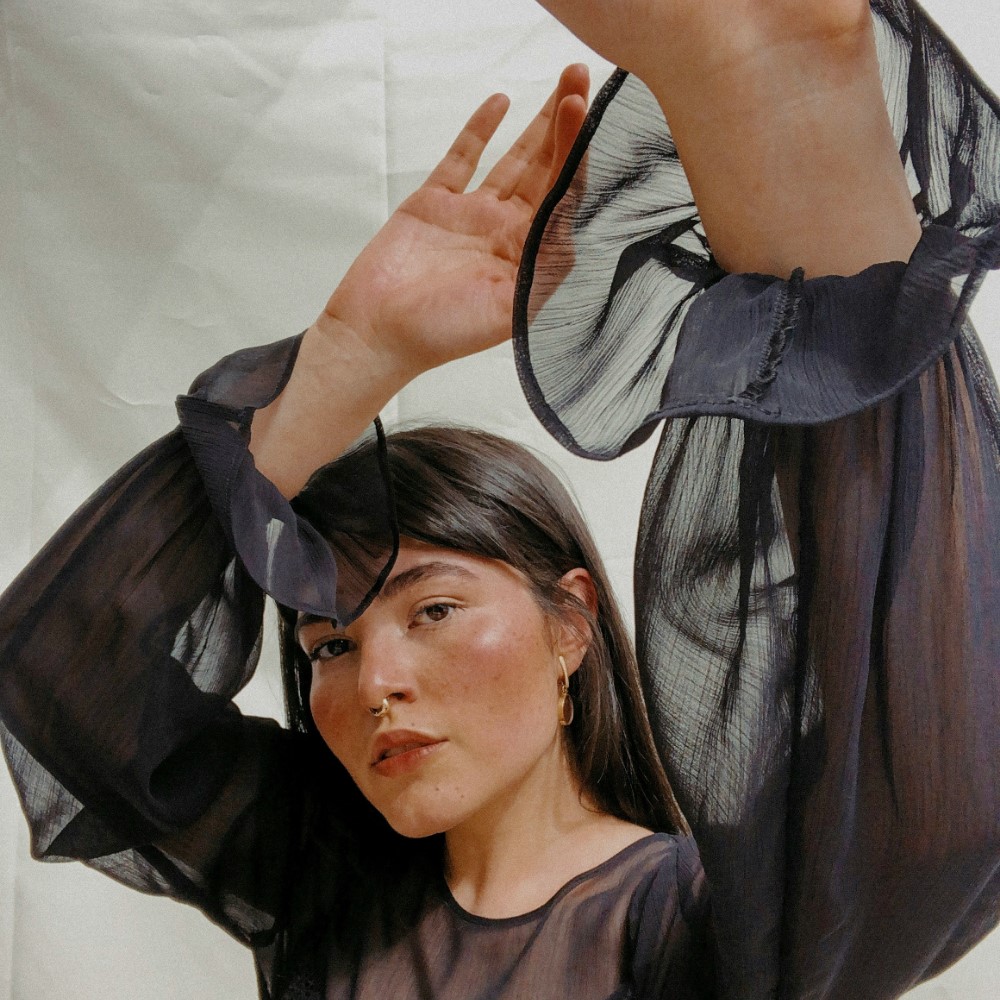
Key Takeaways
- Minimalist fashion focuses on fewer, high-quality pieces, cutting down on waste and microplastic pollution.
- Maximalist fashion can also be sustainable when built on secondhand finds, upcycled items, or eco-friendly fabrics.
- Both styles can reduce fashion’s impact by prioritizing natural fibers, sustainable brands, and buying with intention.
The fashion industry produces about 92 million tons of textile waste every year—that’s like a garbage truck full of clothes dumped into a landfill every second.
When it comes to minimalist vs. maximalist fashion, the choice isn’t only about style. It’s also about how your wardrobe fits your lifestyle, your values, and even its impact on the planet. Minimalism focuses on timeless, versatile pieces, while maximalism embraces bold colors, patterns, and individuality. Both can be done in a way that supports sustainability.
In this guide, we’ll compare the two approaches and share tips on building a wardrobe that expresses your style while reducing waste, limiting microplastic pollution, and being kinder to the environment.
What is Minimalist Fashion?
Minimalist fashion is about keeping things simple while still looking great. Instead of chasing every new trend, you focus on a smaller number of timeless pieces that can be worn in lots of different ways. Picture classic styles, neutral colors, and fabrics that feel good and hold up over time. It’s like having a capsule wardrobe but with an eco-friendly twist.
Key Characteristics of Minimalist Fashion
- Neutral Colors & Simple Silhouettes: Whites, blacks, grays, and earthy tones that never go out of style.
- Quality Over Quantity: Invest in a few durable, well-made items instead of piles of trendy clothes.
- Eco-Friendly Fabrics: Minimalism leans on natural fibers like cotton, linen, and wool, which last longer and are gentler on the planet.
Why Minimalist Fashion Supports Sustainability
- Less is More: Fewer purchases mean less waste heading to landfills.
- Sustainably Sourced: Higher-quality pieces often come from ethical brands with smaller footprints.
- Microplastic Reduction: Choosing natural fibers avoids synthetic shedding, one of the primary sources of microplastic pollution in water and soil.
- A Minimalist Mindset: Buying with intention reduces clutter, saves money, and ensures you only keep items you love and actually wear.
Sustainable Minimalist Brands
- Everlane: Everlane is a minimalist brand focusing on transparent, ethical production and sustainable materials. It is actively working to reduce its use of virgin polyester and is increasing its use of recycled polyester in products like outerwear. The brand is committed to reducing plastic usage and transitioning to more sustainable alternatives.
- Reformation: A popular sustainable brand creates minimalist yet chic styles. It prioritizes using recycled polyester and other eco-friendly materials. Though some of its pieces are more maximalist in flair, it also has a solid collection of minimalist clothing made from sustainable materials like recycled fabrics and organic cotton.
- PACT: PACT offers minimalist clothing made from organic cotton and recycled materials. Known for their simple, versatile designs, they also focus on ethical manufacturing and reducing plastic in their packaging. Their clothing is designed to be comfortable and long-lasting, which aligns with a minimalist ethos of fewer, better things.
What is Maximalist Fashion?
Maximalist fashion is the opposite of minimalist style, but it can still be sustainable. This approach is about boldness, creativity, and personality. Think bright colors, playful patterns, and layered textures. If minimalist fashion is about keeping things simple, maximalism is about freedom, turning your wardrobe into a canvas for self-expression.
Key Characteristics of Maximalist Fashion
- Bold Colors & Patterns: Bright hues, mixed prints, and surprising combinations. Nothing is too “extra.”
- Layering & Accessories: It’s not about random clutter; it’s about mixing textures, accessories, and styles that feel like you.
- Unique Pieces: Vintage, upcycled, or one-of-a-kind items tell stories and make your style stand out.
Sustainability in Maximalist Fashion
Maximalism often gets labeled as wasteful, but it doesn’t have to be. Sustainable maximalism is about mindful abundance, embracing bold looks without feeding fast fashion’s cycle.
How to Make Maximalism Sustainable
- Shop Secondhand: Thrift and vintage finds add character and reduce waste.
- Upcycle & DIY: Add patches, embellishments, or alterations to breathe new life into old clothes.
- Invest in Statement Pieces: Choose durable fabrics and bold items built to last, fewer throwaway trends, more longevity.
Maximalist Mindset
At its core, maximalism celebrates individuality. It’s about curating a collection that reflects your personality, not buying endlessly. Like minimalism, it can still be thoughtful and eco-friendly.
Maximalist Brands Focused on Sustainability
- Rothy’s: Offers bold, maximalist designs, from colorful shoes to eye-catching accessories, all made from recycled materials. Their signature fabrics are crafted from recycled plastic bottles, helping reduce plastic waste while delivering fun, vibrant pieces. With machine-washable designs for durability and longevity, Rothy’s blends sustainability with statement-making style, making it easy to rock bold looks without the environmental guilt.
- Ganni: Combines bold, maximalist designs with a strong commitment to sustainability. Known for its vibrant patterns and statement pieces, Ganni is actively working to reduce its environmental impact by using recycled polyester and other sustainable materials in its collections. They are transparent about their manufacturing processes, focusing on ethical production and reducing plastic waste. Ganni’s playful, bold aesthetics align with their mission to create stylish and conscious fashion, ensuring that their bold pieces don’t come at the cost of the planet.
- Amaiò: Blends maximalist style with sustainability, using recycled polyester and organic cotton in bold designs. Committed to reducing plastic waste, it focuses on high-quality, timeless pieces made through ethical practices. Amaiò’s eco-friendly materials and dedication to sustainability make it a standout choice for vibrant, planet-conscious fashion.
5 Ways to Make Both Minimalist and Maximalist Fashion More Sustainable
Whether you’re into the clean lines of minimalist fashion or the bold statements of maximalism, there are sustainable practices you can adopt to make both styles even better for the planet. Here’s how you can take your fashion choices to the next level, no matter your preferred aesthetic:
🛍️ Shop Secondhand and Vintage
Why buy new when the world is already overflowing with clothes? Shopping secondhand cuts waste, saves money, and keeps perfect garments out of landfills.
For minimalists, secondhand is a chance to find those perfect forever pieces: a blazer that fits like a glove, a well-made pair of jeans, or a cozy neutral sweater you’ll wear on repeat. It’s about curating the staples you’ll actually use.
For maximalists, thrifting is like a treasure hunt. Vintage shops are bursting with bold prints, funky jackets, and one-of-a-kind pieces you can’t find anywhere else. Instead of buying mass-produced “statement” clothes, you get unique items with personality.
The best part? Every thrifted piece you bring home means fewer resources used and less new production demanded, small choices that add up to a significant impact.
Don’t Miss: The Slow Fashion Movement Want ideas on where to shop secondhand and online? This guide gives you the best places to start. Read more →👗 Choose Quality Over Quantity
Fast fashion might look trendy and affordable, but it often falls apart after just a few wears, and that means more waste piling up in landfills. A better approach is to focus on fewer, better-made pieces that actually last.
When you invest in durable clothing made from natural fibers like cotton, hemp, or linen, you get pieces that hold up better, feel more comfortable, and don’t need to be replaced as often. Choosing quality over quantity saves money in the long run, reduces waste, and helps break the cycle of disposable fashion.
Instead of filling your closet with items that wear out quickly, build it around well-crafted staples and standout pieces that are designed to stay with you season after season. That way, your wardrobe isn’t just stylish, it’s sustainable, too.
♻️ Upcycle and DIY
Old clothes don’t have to be boring or end up in the trash. With a bit of creativity, you can give them a second life. Got a T-shirt with a hole? Turn it into a tote bag or a set of cleaning rags. Are your jeans looking worn out? Add patches, embroidery, or even paint to make them unique again.
Upcycling is all about making the most of what you already own. Not only does it save money, but it also keeps textiles out of landfills and reduces the demand for new production. Plus, it’s a fun way to add personality to your wardrobe; no one else will have the exact piece you’ve customized.
Don’t Miss: Upcycling Jeans Turn old denim into something fresh and stylish! Discover 8 creative ways to upcycle your jeans. Read more →⚠️Watch Out for Microplastics
Clothes made from polyester, nylon, or acrylic shed tiny plastic fibers every time you wash them. These microplastics slip through water treatment systems and end up in rivers, oceans, and even our food. The best part, you can cut back on this pollution with a few simple changes:
- Wash your clothes less often.
- Add a laundry filter or wash bag to catch fibers.
- Choose natural fabrics like cotton, hemp, or linen that don’t shed plastic in the first place.
🌱 Support Sustainable Brands
There are plenty of brands are trying to clean up fashion using organic fabrics, recycled materials, and fair labor. Minimalists can grab high-quality basics, and maximalists can find bold pieces that are just as planet-friendly as they are fun. Every purchase helps push the industry in the right direction.
When and Where to Wear Each Style
Minimalist or maximalist, both styles have their moments to shine. The key is knowing when to keep things simple and when to go bold so your clothes fit the vibe and make you feel confident.
Professional Settings
Workplaces usually lean toward minimalism. Neutral blazers, crisp shirts, and simple pants give a polished, put-together look without being distracting.
But if you love maximalism, you don’t have to hide it. Add personality with a colorful scarf, bold jewelry, or standout shoes while keeping the base outfit professional.
Special Occasions
- Formal events: Minimalism shines with a classic black dress or tailored tux, while maximalism makes a splash with dramatic textures, patterns, and statement pieces. Both work; it’s all about your comfort zone.
- Festivals & creative events: This is maximalism’s playground! Bold prints, layering, and wild accessories fit right in.
Everyday Outings
Running errands, grabbing coffee, or heading to the farmers market? Either style works. Minimalism keeps things easy with mix-and-match staples. Maximalism adds fun through textures, prints, or playful accessories—even if it’s just a funky jacket over jeans.
Seasonal & Travel
Think about the situation: streamlined minimalist looks often work best for travel, outdoor activities, or when packing light. Maximalist outfits shine indoors or at special events where you can layer and accessorize.
The best part? You can mix them! A minimalist base (jeans + tee) becomes maximalist with a bright, patterned jacket, while a bold piece can be toned down with neutral basics.
Confidence Is Key
At the end of the day, it’s less about the “rules” and more about how you feel. When you wear something that feels authentic, whether bold or straightforward, you’ll look confident, and that’s the authentic style win.
The Impact of Fashion
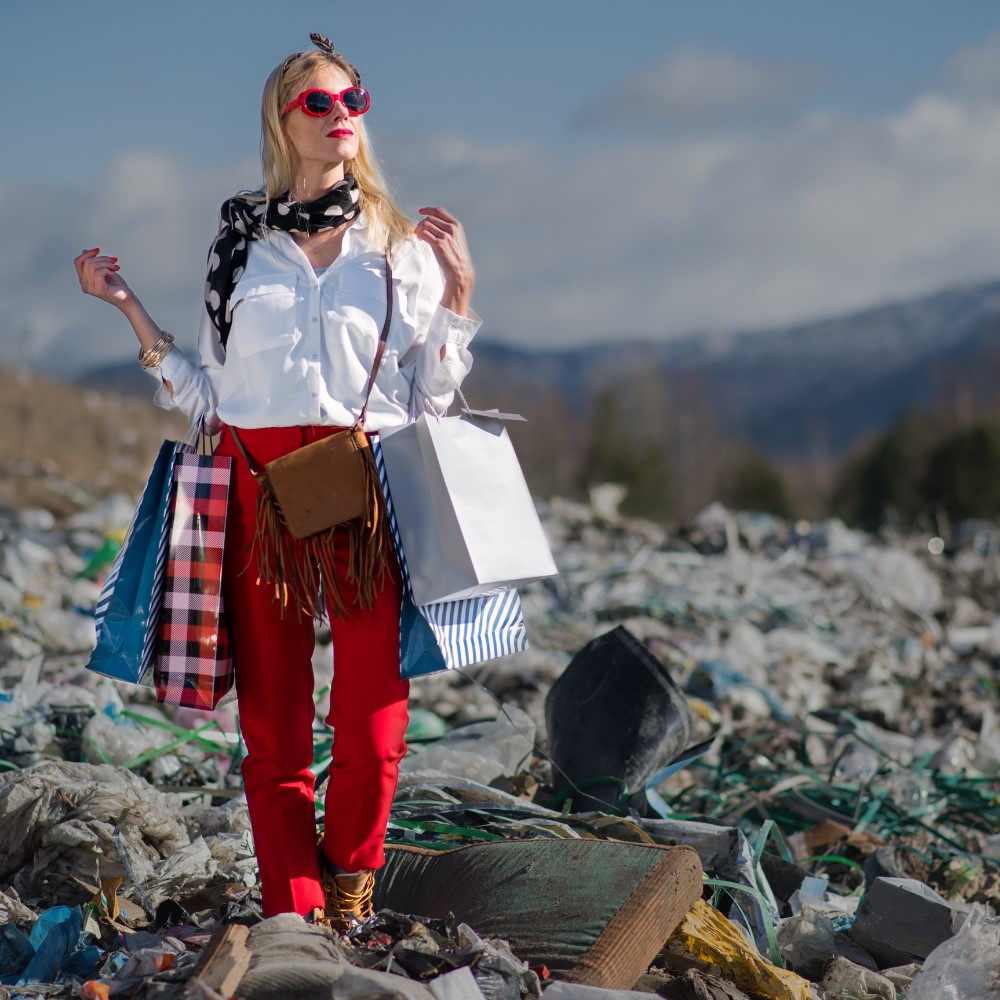
Now that we’ve compared minimalist and maximalist styles, let’s zoom out and look at the bigger picture: fashion’s impact on the planet. Spoiler: it’s not great. Whether you keep things simple or go bold with your wardrobe, the clothing industry leaves behind serious waste and pollution.
Textile Waste: A Mountain of Clothes
The fashion industry is one of the biggest polluters in the world, creating tens of millions of tons of textile waste every year. That’s clothing tossed out at a rate the planet can’t handle.
Minimalism helps fight this by focusing on fewer, better-made pieces that last. Maximalism can make a difference too, especially when it leans on vintage and upcycled finds that give old clothes a second life instead of sending them to landfills.
Plastic and Microplastics: Fashion’s Hidden Polluter
Many clothes are made from synthetic fabrics like polyester, nylon, or acrylic. The problem? Every time you wash them, tiny microplastics break off and flow into waterways. They end up in oceans, soil, and even our food chain.
Polyester is one of the worst offenders. It’s cheap, durable, and colorful, but it’s also a top source of microplastic pollution. The fix is simple: choose natural fibers (like cotton, hemp, or linen) or eco-friendly alternatives (like Tencel or recycled cotton).
Whether you’re a minimalist sticking to timeless staples or a maximalist rocking bold patterns, avoiding plastic-based fabrics as much as possible is one of the best ways to make your wardrobe truly sustainable.
Related Article: What Is Recycled Polyester? Curious if recycled polyester is really an eco-friendly fabric? Get the facts in this quick guide. Read more →The Water Waste Issue: Why Fashion Needs a Water-Saving Makeover
When it comes to environmental bad actors in fashion, another issue is water use, which isn’t just about the amount of water needed to wash your clothes (although that’s also a concern). The fashion industry consumes enormous amounts of water to grow cotton, process fabric, and dye clothes. Did you know that it takes 2,700 liters of water to produce one cotton T-shirt? That’s enough to satiate one person’s thirst for three years.
Minimalist fashion fights back against this problem by promoting quality over quantity, usually resulting in purchases of fewer well-made items made from sustainably sourced materials that require less water. If you have a sizable wardrobe, Maximalists may find that striking a balance means being especially mindful of brands and materials that prioritize water conservation, such as organic cotton or Tencel, which use far less water to produce.
Personal Style Identification: Are You More Minimalist or Maximalist?
At the end of the day, fashion is personal—it’s about how you feel when you get dressed. Some people find comfort and confidence in a pared-down, monochromatic theme. Others feel most authentic when layering bold statement pieces that tell a story. There’s no right or wrong, it’s all about balance and self-expression.
How to Figure Out Your Style
- Look at your go-to outfits: Do you repeat meaningful pieces often, or do you love mixing new combinations every day?
- Think about comfort vs. expression: Minimalist wardrobes lean on practicality and simplicity, while maximalists thrive on individuality and playful storytelling.
- Check your color palette: A love for neutral, monochromatic tones often points toward minimalism. If your closet feels like a rainbow, maximalism might be your thing.
- Notice what gives you confidence: Do you feel best in timeless basics that always work, or in bold items that turn heads?
🎉 Ready to Find Out Your Style Personality?
Answer these quick questions to see if you’re more of a minimalist, a maximalist, or a mix of both!
FAQs About Minimalist vs Maximalist Fashion
Minimalist fashion is all about keeping things simple: fewer, higher-quality pieces you can mix and match in endless ways. Maximalist fashion is the opposite; it celebrates color, patterns, and layers that express individuality. Even though they look very different, both styles can be practiced in sustainable ways, as long as you avoid fast fashion and focus on quality or secondhand pieces.
Many clothes are made from synthetic fabrics like polyester, nylon, or acrylic. When you wash them, they shed tiny plastic fibers called microplastics. These particles slip through wastewater treatment plants and end up in rivers, oceans, and even our food. To reduce this, you can wash less often, use a laundry filter bag or machine filter, and choose natural fabrics like cotton, hemp, or linen.
Absolutely. Maximalism doesn’t have to equal overconsumption. By thrifting unique pieces, upcycling older clothes, and choosing statement items made from durable fabrics, maximalists can embrace bold style without fueling waste. It’s all about being intentional, buying what you’ll love and wear for years, instead of chasing every new trend.
Minimalism helps reduce fashion’s environmental footprint by slowing down consumption. When you buy fewer items but choose high-quality ones, you’re preventing clothing from ending up in landfills so quickly. Many minimalists also gravitate toward natural fabrics like cotton, linen, and wool, which last longer and avoid the microplastic shedding that comes with synthetics.
Natural fibers like organic cotton, hemp, linen, and wool are better choices. They’re strong, comfortable, and don’t shed microplastics in the wash. Some newer eco-friendly fabrics, like Tencel or recycled cotton, are also good options. What matters most is durability, choosing fabrics that won’t wear out after a few washes, so you keep clothing in use longer.
Final Thoughts on Minimalist vs Maximalist Fashion
Fashion doesn’t have to come with guilt; it can actually be a way to do good for the planet. Whether you’re drawn to the simple, timeless vibe of minimalism or the bold, creative energy of maximalism, both styles can be done in ways that are kinder to the Earth. It all comes down to slowing down, choosing better materials, and making the most out of what you already own.
At the end of the day, it’s not about picking one style over the other; it’s about being thoughtful with every piece you add to your closet.
📚References
- Ellen MacArthur Foundation. (2017). A new textiles economy: Redesigning fashion’s future. Retrieved from https://ellenmacarthurfoundation.org/a-new-textiles-economy
- World Wildlife Fund. (n.d.). Handle with care [Magazine article]. WWF. Retrieved from https://www.worldwildlife.org/magazine/articles/handle-with-care
- Napper, I. E., & Thompson, R. C. (2016). Release of synthetic microplastic plastic fibres from domestic washing machines: Effects of fabric type and washing conditions. Marine Pollution Bulletin, 112(1–2), 39–45. https://doi.org/10.1016/j.marpolbul.2016.09.025


